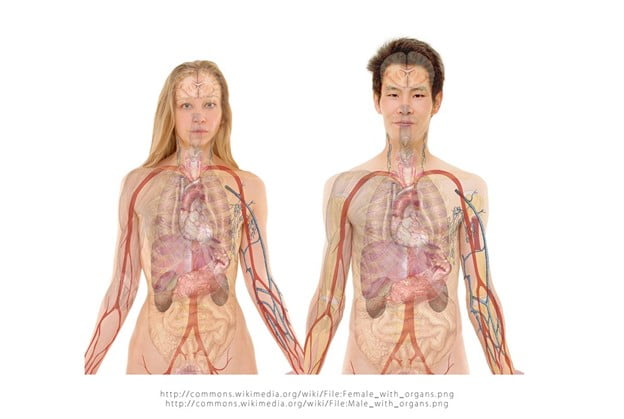The liver is the largest solid organ of the human body that weighs around 3 pounds. It is located under our rib cage on the right side.
The liver performs many vital functions of our body, including metabolism, storage of energy, and bile production. It aids the process of food digestion and stores energy obtained from food. The liver performs its functions by separating nutrients and waste when they move from the digestive system. It also plays an essential role in removing toxic substances from the bloodstream.
Since it is so important, you have to take care of your liver. Liver diseases can damage your liver and affects its functioning. In this article, we will discuss some common symptoms of liver diseases.
Liver Diseases
Liver diseases can be caused by several reasons such as obesity, infections, Immune system abnormality, genetics, etc. However, if it is not diagnosed on time, it may lead to scarring and more complexity over time. It may turn into NASH (Non-alcoholic Steatohepatitis) and you might start feeling NASH symptoms. NASH disease damages the liver pretty fast and severely.
If liver disease is left untreated, it leads to liver failure and results in liver cancer. That’s why early diagnosis and treatment will help heal your organs and prevent permanent liver damage.
Symptoms of Liver Diseases
As we discussed earlier, there could be many causes of liver disease. In some individuals, it may appear due to infections/obesity, while others may develop this disease because of genetics. This is the reason why the symptoms of liver disease differ in different individuals. It is also possible that some individuals may not have any symptoms at all.
The common symptoms of liver disease are:
- Yellowish skin and eye color (Jaundice)
- Itching of the skin
- Nausea/vomiting
- An enlarged stomach which makes it uncomfortable to eat or lie down
- Pale, blackish/bloody stools
- Changings of urine color, with a dark-colored urine
- Bruising
- Fatigue
- Weakness
- Weight loss
- Swelling of the arms
- Swelling in the legs/ankles
- Encephalopathy (a disease that disturbs the function or structure of a brain resulting in changes in the sleep cycle, mood, and more)
- Abdominal pains, especially on the right side.
Major Signs of Liver Damage
You need to recognize the signs of liver damage and know what causes them. There are a lot of misconceptions. For example, fatty acid disease is often blamed on fats, when it is really caused by carbohydrates.
1. Bruising
When a liver is not functioning properly, you may experience easy bruising. It happens when a liver can’t produce enough amount of the clotting proteins your blood needs. Therefore, when more bruising occurs, it can be a sign that your liver is malfunctioning.
However, the liver problem is not the only cause of frequent bruising. A variety of other factors could also be the cause of more bruising, so check with your doctor if this has affected you.
2. Jaundice
The liver performs its normal functions by filtering out bilirubin which is a yellow-colored bile pigment. When a liver is undergoing a disease, it can’t process blood effectively, which ends up with your liver piling up in bilirubin. The accumulation of bilirubin contributes to yellowish touch to your skin and the white portion of your eyes.
Jaundice caused by damage to the liver is sometimes accompanied by itchy skin.
3. Pale/Black Stools
If you are experiencing pale stools, this can be a symptom of liver damage. When a liver is functioning normally, it releases bile salts (that give the normal dark color of stools). However, the pale stool is an indication of liver malfunctioning.
On the other hand, blackish stool color is another indicator of liver disease, which is caused by blood passing through the digestive system. Seek immediate medical attention if you experience these symptoms.
4. Nausea
You may experience nausea and vomiting because of the incapability of the liver to filter out toxins in the bloodstream. If a person has ongoing nausea, it is a sign of early liver damage.
Once damage becomes more severe, patients with liver disease may also go through other medical conditions, such as abdominal pain, appetite loss, and diarrhea.
5. Ascites
Cirrhosis is a liver disease in which scar tissues get built up in the liver, resulting in blockage of blood flow in the liver. Therefore, the malfunctioning of the liver leads to fluid retention in the abdomen known as ascites. Swelling of the legs or ankles could also be an indicator of liver disease.
The retention of fluid is one of the most common symptoms in patients that indicates their liver is damaged.

Seek Medical Attention For Your Liver Disease
Usually, the onset of liver problems is a steady process, and no visible symptoms may appear that motivate an individual to seek immediate medical attention. Symptoms such as vomiting, pale stools, persistent fever, and abdominal pain are red flags that require prompt medical evaluation.
Once you start noticing these symptoms, and it becomes clear that some serious health condition is damaging the liver, visit your doctor without further delay.